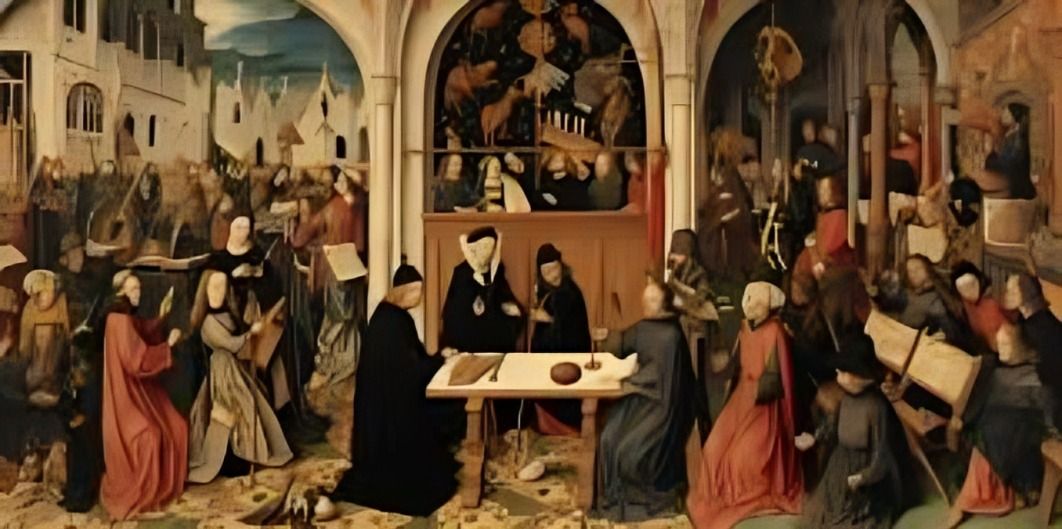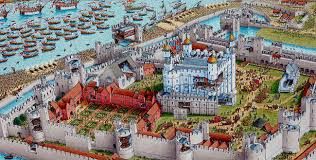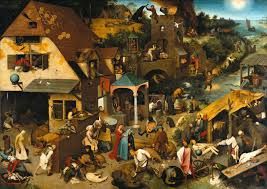
“
The High Middle Ages witnessed the rise of towns and cities, transforming the medieval world. This era saw a surge in trade, population growth, and the establishment of urban centers as economic and cultural hubs. Towns and cities became the heart of commerce, guilds, and innovation, marking a shift from feudal agrarian life to dynamic urban living. Explore The Rise of Towns and Cities in the High Middle Ages to uncover key insights about their origins, development, and impact on medieval society, trade, and the broader European landscape.1
1
”
The rise of towns and cities in the High Middle Ages was fueled by the growth of trade and commerce, as merchants established marketplaces that became central hubs for local economies and cultural exchange. 1
Medieval towns had thick stone walls and gated entrances. Unpaved streets were lined with homes and shops displaying pictorial signs. Public squares near churches served as central gathering spots. 2
Increased agricultural productivity during the medieval period allowed for surplus food, which supported population growth and the development of urban centers as more people moved from rural areas to towns. 3
In the early Middle Ages, towns were under feudal lords, but growing wealth led residents to resent taxes and control, feeling independent and no longer needing the lord's protection. 4

Medieval towns thrived through trade and production, managed by guilds. Merchant and craft guilds regulated work hours, set prices, upheld standards, and punished dishonest members to protect their reputation.
In the early Middle Ages, most people lived rurally, but by the 12th century, towns grew around castles, monasteries, and trade routes, becoming vibrant centers of trade and industry. 5
Towns had markets for local goods, while large merchant fairs, held a few times a year, attracted merchants from across Europe, the Middle East, and beyond, offering goods from many regions. 6
Medieval towns saw the rise of universities like Oxford, Paris, and Bologna. Students studied theology, philosophy, law, and medicine, with education focused on the seven liberal arts: trivium and quadrivium. 7
The rise of craft guilds in medieval towns played a key role in shaping urban economies. These organizations regulated trades, set prices, and ensured quality control, leading to the prosperity of many towns.8

The growth of towns led to the creation of city walls for protection. These fortifications helped defend towns against raids and invasions, providing a safe space for the growing urban population.
Urbanization during the High Middle Ages contributed to the development of new architectural styles, including the construction of churches, town halls, and marketplaces that were central to the life of medieval towns.9
The development of a merchant class in towns created a new economic power structure. Merchants played an increasingly important role in the economy, and their wealth helped stimulate further urban growth.10
Universities began to emerge in towns during the High Middle Ages. These institutions of learning were often supported by the clergy and became centers of knowledge, contributing to the intellectual development of the period. 11
The rise of towns and cities also contributed to the growth of literacy, as urban centers had access to books and scribes, leading to greater dissemination of knowledge and education among the population. 12

With urbanization, sanitation became a significant concern. Many towns struggled with waste disposal and water supply, which led to the development of early public health measures like public latrines and water systems.
In many towns, the church played a central role in daily life. Towns often centered around large churches or cathedrals, which served as not only religious centers but also community gathering spaces. 13
The rise of towns in the High Middle Ages helped to end the isolation of rural life. Towns became vibrant hubs where people from different regions, cultures, and backgrounds came together, fostering cultural exchange.14
The rise of towns and cities was closely linked to the development of the medieval economy, including the rise of banking and credit systems that allowed for larger, more sophisticated trading networks. 15
The rise of urban centers led to the creation of markets where goods such as textiles, food, and spices were traded. These markets became vital to the economy, providing access to a variety of goods. 16
The medieval town's emphasis on trade and craftsmanship led to innovations in construction, art, and technology, with the development of guilds encouraging mastery in various trades, helping urban economies flourish.17


